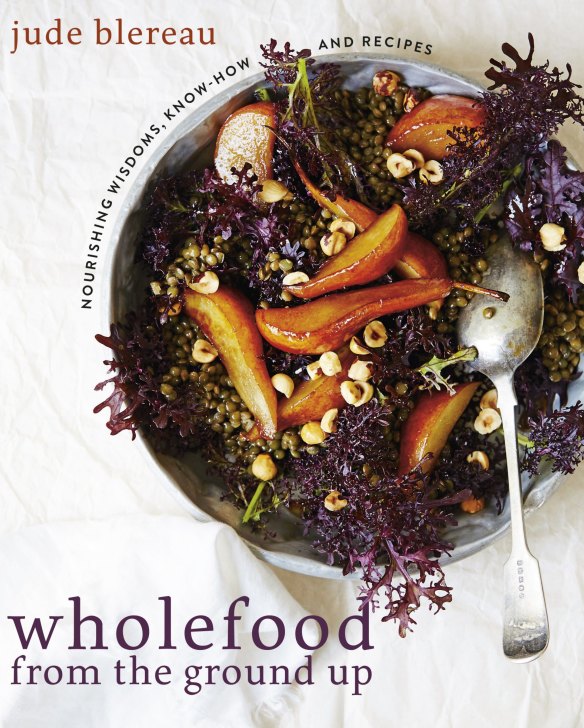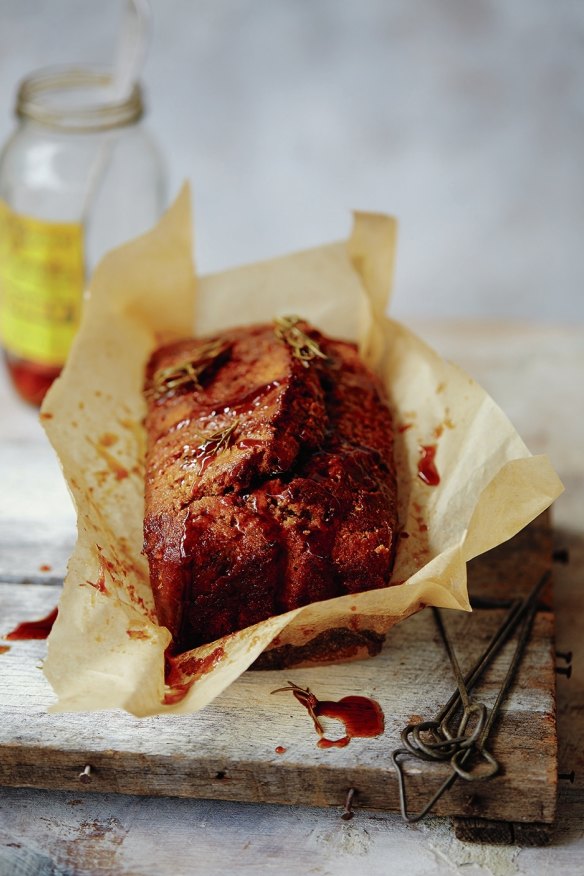Jude Blereau's Wholefood from the Ground Up
Jude Blereau was living a wholefood life long before 'wholefood' was a buzzword for healthy living.

BARLEY, RAINBOW CHARD AND LEMON RISOTTO
SERVES 4-6
You will need to begin this recipe the day before

100g pearl barley
2 tbsp green lentils
3 tsp whey
2 tbsp extra virgin olive oil, plus extra for drizzling
1 medium leek, whites thinly sliced and rinsed (reserve the green tops for stock) (or 1 onion, finely chopped)
3-4 garlic cloves, finely chopped
2 tsp finely chopped rosemary
2cm piece kombu
2 bay leaves
500ml chicken or vegetable stock
1 tsp ghee (or extra virgin olive oil, if vegan)
1–2 small-medium rainbow chard or silverbeet leaves (about 160g), well rinsed, leaves and tender stems cut into wide strips
sea salt and freshly ground black pepper, to taste
1-2 tbsp lemon juice
25-50g grated parmesan or pecorino cheese
40g toasted pine nuts
The night before, place the barley and lentils in separate bowls and add enough water to cover by two centimetres. Stir two teaspoons of whey into the barley and one teaspoon into the lentils. Set aside at room temperature for at least eight hours or overnight.
The next day, make the risotto. Place the olive oil, leek, garlic and rosemary in a heavy-based 20cm cast-iron pan. Cook over low heat, stirring occasionally for 10 minutes, until translucent.
Drain the barley and lentils, then add to the pan with the kombu and bay leaves, and stir through. Add the stock and bring to a simmer, then cover and cook over low heat for 40 to 50 minutes, until the barley and lentils are cooked and tender to the bite; there should still be plenty of liquid left.
Next, heat the ghee in a medium-sized frying pan over low heat. Add the chard stems and cook gently, stirring occasionally, for 10 minutes. Toss in the leaves and cook for another 10 minutes, until they are well wilted. Increase the heat to reduce the liquid.
When the barley and lentils are ready, stir in the chard and simmer, uncovered, for five minutes or until most of the liquid has evaporated. The barley will continue to absorb liquid as it sits. If it looks a little dry, add a little more stock or water to loosen. Season generously with sea salt and pepper (this is a dish that loves pepper), then stir in the lemon juice and parmesan cheese to taste. Scatter with the pine nuts, then drizzle with a little extra virgin olive oil and serve.
Kitchen Note: Sausage would be a delicious addition to this dish. Add the sausage to the pan with the onions. It will add more fat to the dish so you may want to reduce the amount of extra virgin olive oil, or serve it on the side.
ROSEMARY, OLIVE OIL AND LEMON TEACAKE
SERVES 8-10
130g white spelt flour
110g barley flour
1½ tsp baking powder
1 tbsp finely chopped fresh rosemary
finely grated zest of 1 medium-large lemon
115g rapadura sugar or raw sugar
sea salt and freshly ground black pepper
3 eggs
1 tsp natural vanilla extract
185ml extra virgin olive oil
185ml cultured buttermilk
LEMON SYRUP:
185ml strained lemon juice
75g rapadura sugar or 70g raw sugar, plus extra as needed
4–5 rosemary sprigs, about 2–3cm long
Preheat the oven to 180C. Lightly grease and line a one litre capacity loaf tin with baking paper. Don't cut the corners of the baking paper to fit – fold them instead. This will allow you to pour the lemon syrup onto the cake when it is cooked without it seeping into the tin.
Place the flours, baking powder, rosemary, lemon zest, sugar, a few grinds of pepper and a pinch of salt in a mixing bowl and whisk together to evenly distribute the ingredients.
Place the eggs, vanilla, olive oil and buttermilk in another bowl and whisk together. Add the wet mix to the dry mix and stir gently to combine. Transfer to the lined tin and bake for 60–70 minutes or until a skewer inserted into the middle of the cake comes out clean.
About 10 minutes before the cake is ready, start making the lemon syrup. Place the lemon juice, rapadura sugar and the rosemary sprigs in a small saucepan. Bring to the boil and simmer for five minutes, then taste and add extra sweetness as desired (see Kitchen Note). Continue to simmer until it has reduced by one-third and has a syrupy consistency.
Remove the cake from the oven and, while still hot, use a cake skewer to pierce the cake right to the bottom in 12 places. Pour the hot syrup over the top, making sure it flows into any cracks. Leave to cool briefly before serving. Store for up to four days in an airtight container, in a cool dark place.
Kitchen Note: Although the amount of sugar in the syrup may seem excessive, lemons vary enormously in their acidity, and rapadura sugar is only about 75 per cent sucrose. Add what works for you, to your taste. You may prefer to add a bit of rapadura and bring it to a syrup consistency, then add some honey to the mix.